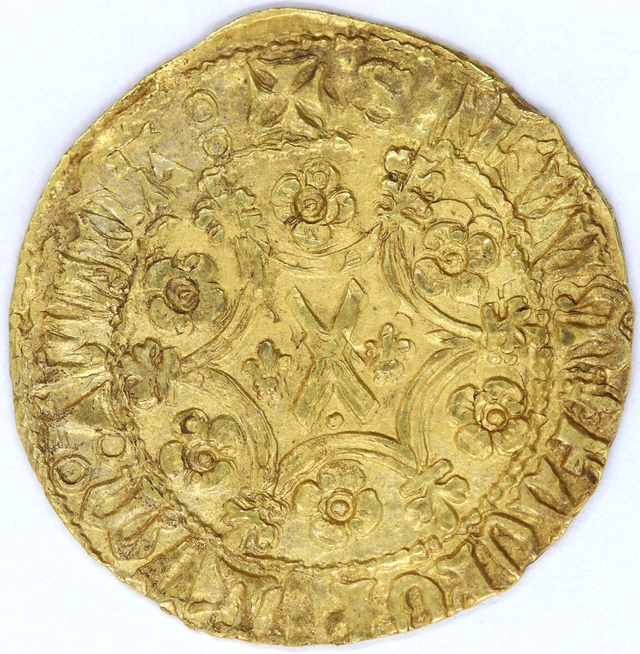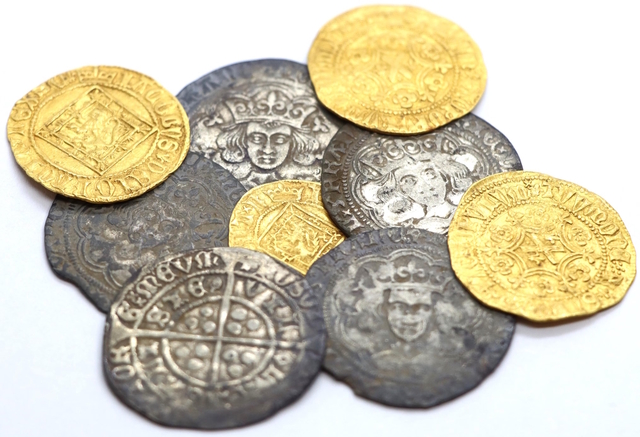In November 2024, a remarkable archaeological discovery took place in the Scottish Borders, one that has sent ripples through the world of history and numismatics. Metal detectorists Keith Young and Lisa Stephenson stumbled upon a hidden treasure—an extraordinary hoard of 15th-century gold and silver coins. The discovery was made in the Cappercleuch area, near St. Mary’s Loch, a picturesque region that has now gained global attention for its archaeological significance. Little did these two enthusiasts know, their find would turn out to be one of the most significant of its kind in recent years.
Who Were the Metal Detectorists Behind the Discovery?
Keith Young and Lisa Stephenson were not expecting to uncover anything so historically important when they set out to scan the field in Cappercleuch. The two metal detectorists were simply trying to make the pasture more accessible for the family’s cattle, when they made their serendipitous discovery. As Young describes it, “As soon as I saw the glint of gold, I knew we had found something special.” Their immediate excitement was met with responsibility when they quickly reported their find to the Treasure Trove Unit. The duo was invited to participate in the subsequent excavation alongside archaeologists from the National Museum, confirming their discovery’s incredible historical significance.
Description of the Coin Hoard

The coin hoard, which consists of over 30 gold and silver coins, is an important archaeological find that sheds light on a fascinating period in both English and Scottish history. Among the hoard are English silver groats minted by Kings Henry V and Edward IV, and Scottish gold demys and half-demys minted during the reigns of James I and II. These coins provide an exceptional glimpse into the complex political and economic relations between England and Scotland during the mid-15th century. The hoard includes coins from both kingdoms, which points to the turbulent yet interconnected history between the two nations during this time.

The hoard, dating back to the 1460s, a period of significant political upheaval in both Scotland and England, is a unique blend of two powerful monetary traditions. This period in history was marked by the Wars of the Roses, which saw factions fighting for control of the English throne. At the same time, Scotland struggled with internal conflicts and power struggles, especially with the struggles of its child monarchs and rebellious noble families.
Video
Watch Medieval Coin Hoard Unearthed in Scottish Borders to uncover this incredible discovery from Scotland’s past. A fascinating look into medieval history!
The Political Landscape During the 1460s
To truly appreciate the importance of this discovery, it’s vital to understand the political and historical context of the 1460s. In England, the reign of Henry VI was fraught with instability. Following the death of Henry V, his infant son inherited the throne, but the kingdom was soon embroiled in the Wars of the Roses. These wars, between the rival houses of York and Lancaster, left the kingdom politically fractured. By the time the coins in this hoard were buried, England had lost almost all of its territories in France, and the nobles were in open conflict. The discovery of these English coins provides a direct link to the chaos and struggles faced by England during this period.
In Scotland, the situation was no less turbulent. James I, who had spent many years as a prisoner in England, had been assassinated in 1437, leaving his young son, James II, to take the throne. His reign was marked by internal strife, especially with powerful families like the Douglases, who were pivotal players in the Scottish aristocracy. By the time of this hoard’s burial, James II was in control but still dealing with resistance from the Scottish nobility. This complicated political environment makes the presence of both Scottish and English coins in the hoard especially intriguing.
The Archaeological Significance of the Hoard

The find is historically significant not only for the period it represents but also because of the rarity of similar discoveries. Archaeologist Dr. Natasha Ferguson noted, “The mixture of English and Scottish coinage reflects the complex trade networks and political alliances of the time.” This hoard provides a direct insight into the economic exchange that occurred during a time of political division. Having a combination of coins from both kingdoms suggests that these two nations were economically and politically intertwined, despite their tumultuous history.
Hoard deposits like this one were often hidden away during times of war and instability. The coins could have been buried for safekeeping by someone who feared the collapse of the political order or perhaps to protect their wealth from the chaos of battle. The combination of coins from two different nations speaks to the complex and often tense relationship between Scotland and England during the 15th century.
The Excavation Process and Additional Finds
Following the initial discovery, archaeologists quickly moved to assess the significance of the hoard. The process involved carefully excavating the area to recover more of the coins. This excavation was crucial to preserving the integrity of the find, and archaeologists were able to unearth five additional coins from the same hoard. The team worked alongside the finders, Keith Young and Lisa Stephenson, to ensure that the excavation was carried out methodically and responsibly.
Archaeologists noted that the hoard is in remarkable condition, with many of the coins still intact and legible. This is especially important as many coin hoards from this period are lost to time, or the coins become too corroded to study. The high level of preservation offers a rare opportunity to study medieval coinage and to understand more about the political and economic systems of the time.

The Fate of the Coin Hoard: Museum or Private Collection?
Once the coins have been carefully analyzed, their future will be decided by the Scottish Archaeological Finds Allocation Panel (SAFAP). The panel is tasked with determining the market value of the hoard and allocating the reward to the finders. If the coins are deemed to have significant historical and cultural value, they may be acquired by a museum for public display. However, this decision is not yet final, and there are a number of factors that SAFAP will take into account, including the potential educational value of the hoard and its role in enriching public understanding of Scotland’s medieval past.
The possibility of these coins being displayed in a museum is an exciting prospect for history enthusiasts and tourists alike. They will provide a tangible connection to the past and offer valuable insights into the complex world of medieval Scotland and England. This find underscores the importance of metal detectorists in modern archaeology and their role in bringing forgotten treasures back to life.
Conclusion: The Historical Value of the Coin Hoard
In conclusion, the discovery of the 15th-century coin hoard in the Scottish Borders is a remarkable find that enriches our understanding of a turbulent and transformative period in history. The hoard’s combination of English and Scottish coins speaks to the complex relationships between these two nations and their people. As the coins undergo further analysis and the process of determining their fate unfolds, it’s clear that this discovery will continue to captivate archaeologists, historians, and the general public for years to come.
This find is a testament to the power of archaeology in uncovering the hidden stories of our past. For Keith Young and Lisa Stephenson, it’s a reminder that even in the most ordinary of fields, history can lie buried, waiting to be rediscovered. Their “once-in-a-lifetime” find has undoubtedly left a lasting mark on our understanding of the medieval world.
Video
Watch Treasure Hunters Unearth 1000-Year-Old Silver Coins from Norman Conquest | BBC News to discover this fascinating find from medieval history. A must-watch for history lovers!



